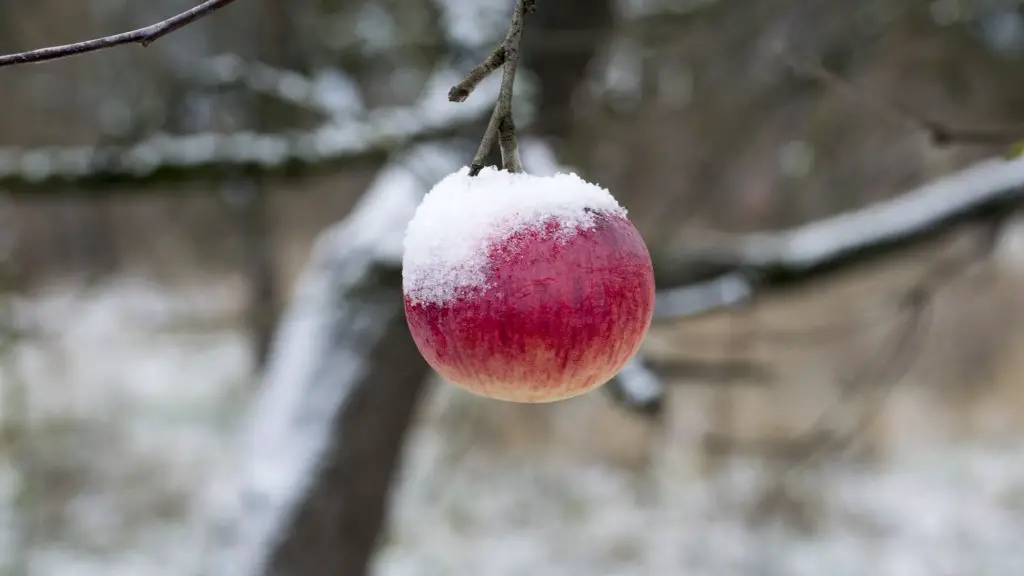If you want to grow your own lemon tree, it’s not too difficult but does require some patience and attention. To begin, you will need to purchase a healthy, mature lemon tree as well as some compost, fertilizer, and pruning shears. Once you have all the supplies you will need, you can start the process of planting your lemon tree.
You’ll need a sunny area for the lemon tree; otherwise, it won’t thrive. A south-facing garden or patio is ideal, but anywhere that gets several hours of sunlight each day should be suitable. Dig a hole that is at least twice the size of the lemon tree’s root-ball and then place some compost in the bottom. Place the lemon tree in the hole, making sure it’s at the same height as it was in the pot. Fill in the rest of the hole with compost and soil before patting the soil down firmly and adding some water to the site.
Once your lemon tree is planted, it’s time to prune any dead or damaged branches. Pruning helps keep the tree healthy and encourages growth. If any branches are less than two feet long, cut them back a little. Otherwise, if a branch is longer than two feet, prune it back to from five to seven leaves from the bud. You may also want to prune off any lemons that haven’t ripened as this will allow other lemons to reach full maturity.
Fertilization is necessary to ensure the health and productivity of your lemon tree. Citrus trees need nitrogen and phosphorus, so choose a fertilizer that provides these essential nutrients. Fertilizer should be added twice each year, once during October and then again in February. After fertilizing, be sure to water the tree deeply, taking care not to overwater. Aim for approximately one inch of water each week.
After your lemon tree is in the ground and you’ve taken care of the pruning, fertilizing, and watering needs, your job is done. The lemon tree will begin to produce fruit in a few years but until then, enjoy the leaves and flowers it can provide. With a bit of luck and attention, you’ll be able to harvest your own delicious lemons in no time at all.
Pest & Disease Control
Lemon tree problems can arise due to pests and disease. The most common pest associated with lemon trees is the citrus whitefly, which can be treated with insecticidal soap or oil. Other pests to watch out for are aphids, mites, and scale. When it comes to diseases, the most common is citrus blight, which causes yellowing and distorted leaves. To prevent this, water at the base of the tree and spray with fungicide if necessary.
Other diseases to be aware of are canker, powdery mildew, and root rot. Canker causes discoloration and lesions on the leaves and fruits. To control this, prune the affected areas and treat with a fungicide. Powdery mildew appears white and powdery on the upper and lower surface of the leaves. The best way to control this is to spray with a fungicide. Finally, root rot is caused by overwatering or planting in wet soil, and can be treated with fungicide.
It’s important to monitor your lemon tree for pests and diseases regularly and take action if necessary. Pay attention to the leaves, stems, and fruits and take steps to reduce the risk of pests and diseases.
Harvesting & Storage
Your lemon tree should bear fruit once it has been in the ground for a few years and as the fruits mature, you’ll want to harvest them. The best time to pick is when the lemon is still green but beginning to turn yellow. Lemons can be picked from the tree by hand or with tree-picking aids such as clippers and picking poles. Lemons should be stored in a cool, dry place and will keep for up to three weeks.
When it comes to preparing lemons for consumption, make sure to wash them thoroughly to remove dirt and debris. Lemons can then be stored in the fridge or used in a variety of recipes such as lemonade and lemon meringue pie. If you have more lemons than you can use, you can freeze, can, or dehydrate them.
For those looking to grow their own lemons, there are plenty of ways to enjoy the fruits of your labor. Whether you’re storing them for later or simply eating them fresh-picked from the tree, the lemon is a versatile and delicious citrus fruit.
Companion Planting
Companion planting helps promote growth and health for your lemon tree. The best companions for a lemon tree include rosemary, marigolds, sage, oregano, basil, chives, and thyme. These plants bring beneficial microorganisms, repel pests, and attract pollinators such as bees and birds.
Basil, for example, helps repel pests such as aphids and can be planted near the base of the tree. Rosemary and oregano repel pests such as mites, and chives and thyme attract beneficial insects such as bees and ladybugs. Planting these herbs around the base of your tree will help keep the pests away and provide a balanced ecosystem.
By planting companion plants, you are providing your lemon tree with vital nutrients and protection against pests and disease. The plants will also attract pollinators, which can help increase fruit production. Planting companions also helps keep weeds away and improves the overall soil quality.
Container Gardening
If you don’t have a garden or space for a full-sized lemon tree, you can still grow your own lemons by container gardening. Choose a pot or container that’s large enough for the size of the tree and place it in an area that gets at least 6 hours of direct sunlight each day. Use an organic potting mix and plant the lemon tree in the center of the container.
Your lemon tree should have the same needs as the one grown in a garden. Pruning, fertilizing, and watering are still necessary, as well as pest and disease control. Monitor the pot for pests and use organic sprays as needed. Keep in mind that lemon trees grown in containers require more frequent watering than those in the ground, so keep an eye on the moisture level of the potting mix.
When it comes to harvesting lemons from a container, you’ll want to make sure the pot is deep enough for the roots to spread. If you don’t have a deep enough pot, you can always transfer the soil into a larger one. Container grown lemons don’t generally get as large as those grown in the ground, but they can still provide you with plenty of lemons.
Growing a lemon tree in a container is a great way to enjoy the fruits of your labor even if you don’t have the space for a full-sized tree. With a bit of care and attention, you can have your own little patch of lemon trees right in your own backyard.




